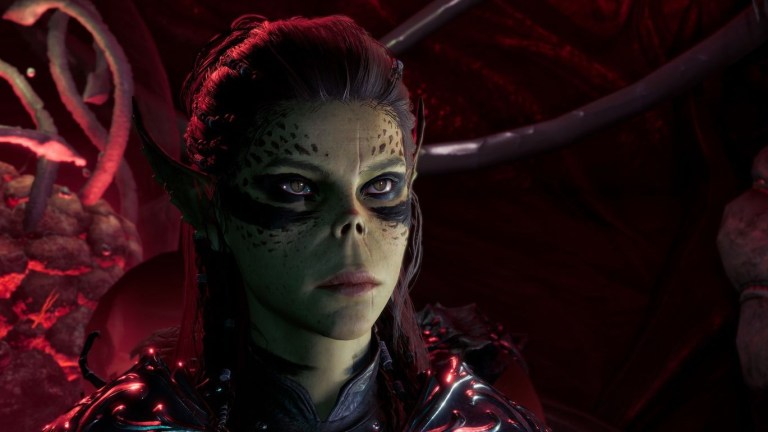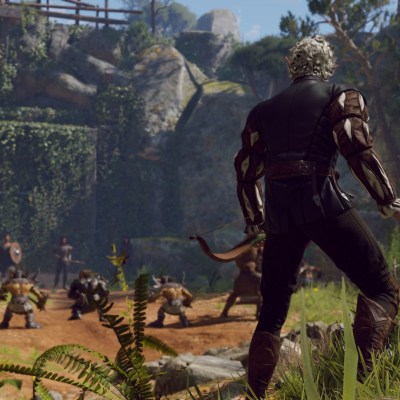Baldur’s Gate 3 Early Access: An Excellent Return to D&D’s Forgotten Realms
Fans of the classic Baldur's Gate series, Divinity: Original Sin, and Dungeons & Dragons will all find something to love in Baldur's Gate 3!

Larian Studios and Wizards of the Coast have teamed up to bring fans the long-awaited Baldur’s Gate 3, which hits Steam early access today. Over the weekend, I spent 18+ hours with a pre-release early access build of the game, and so far I’ve found this RPG sequel to be absolutely addicting. Even in early access, I’m really looking forward to sinking dozens upon dozens of more hours into Baldur’s Gate 3.
The early access only features Act 1 of the game’s full narrative, but this is still a very generous taste of Larian’s take on the Forgotten Realms, with over 20 hours of content to experience, according to the studio. In general, I think most longtime Baldur’s Gate fans as well as newcomers will be really impressed with the modern flourishes and new story Larian has put in place.
This shouldn’t be too surprising, though. After all, Larian’s Divinity: Original Sin and Divinity: Original Sin 2 are two of the best fantasy RPGs of the last decades. Those enamored with Larian’s catalog will be pleased to find that Baldur’s Gate 3 takes the DNA of DOS and entangles it with Dungeons & Dragons tabletop mechanics in a way that feels organic and balanced. The main components that make up DOS–combat, exploration, branching narratives–are all represented in Baldur’s Gate 3 in a familiar way, with 5th Edition D&D rules organically folded into the experience. A particularly brilliant D&D-inspired addition is the excellent narrator/DM voiceover you’ll hear throughout your adventures.
At the story’s outset, your character wakes up on a Nautiloid, a sinister-looking flying vessel piloted by mind flayers, who have captured you and a slew of hapless souls and implanted tadpole parasites into your brain. When the ship is attacked by dragons, the mind flayers teleport the vessel smack dab in the middle of the eternal Blood War being waged between devils and demons in Avernus, the first layer of hell. This gives you a chance to escape.
The ship eventually crash-lands somewhere between the cities of Elturel (which, in a cataclysmic event, has just been dragged into hell and back again) and Baldur’s Gate. You and the companions you meet–all infected by the same wriggly mind flayer tadpoles–set out in search of a way to extract the meddling parasites, which grant you strange psychic abilities that may actually come in handy during your quest should you choose to employ them.
That’s truly the beating heart of any good RPG–choice. Above all else, what I was most impressed with in my time with Baldur’s Gate 3 was the extent to which my choices as a player affected the experience.
The first choices you make, of course, are in character creation. The game currently offers six classes: Cleric, Fighter, Ranger, Rogue, Warlock, and Wizard, with each class boasting at least two subclasses. As for races, the game lets you choose from eight: Human, Githyanki, Drow, Elf, Half-Elf, Dwarf, Halfling, and Tiefling (certain races include subrace options as well). You can also customize your skills and abilities, choose your background (like Charlatan, Soldier, Thief, etc.), and even customize what the romantic partner of your dreams looks like.
Character customization is robust, but that’s just scratching of the surface as far as choice and player agency is concerned. Not long into exploring the continent of Faerûn and meeting, fighting, and questing for its inhabitants, it became abundantly clear that it’s going to be impossible to see everything in the game in one, two, or three playthroughs. Each encounter, conversation, and quest can be approached in myriad ways, with wildly different outcomes that will no doubt make each player’s experience unique.
The dialogue options alone are insanely varied and dynamic. For example, there’s an early encounter in which you encounter one of the game’s main companions, a warrior Githyanki named Lae’zel, who has been captured by a band of Tieflings. In one playthrough, my character, a Githyanki fighter, was able to intimidate the Tieflings into fleeing (most risk-based dialogue options lead to a d20 roll, which decides their success or failure). But in my playthrough with a Dwarf Ranger, I wasn’t able to talk my way out of the situation and had to go toe-to-toe with the captors. To complicate matters, I had a Half-elf companion Shadowheart with me the second time around. Needless to say, she and Lae’zel basically hated each other’s guts from the get-go, which made the conversation far spicier on the second playthrough. In total, I tried three classes and races for this article–a Githyanki Fighter, Dwarf Ranger, and Half-Elf Wizard–which resulted in some very interesting variations.
Every conversation plays out differently depending on your race, class, who’s in your party, promises you’ve made to other characters prior to the conversation, and so on. There’s far more variety to the branching narrative here than what was on offer in Divinity: Original Sin 2, which makes the game feel more like an open-ended tabletop adventure than anything else Larian has ever made.
Because there are so many characters to meet with so much to say, Faerûn feels dynamic and exciting. The setting is an absolute blast to explore because you truly never know what ridiculousness is lurking around the next corner. I partied with goblins in a blighted village, tamed an owlbear cub I found in a cave with my fauna-friendly ranger (in another playthrough I watched it do something unspeakable to its mother…), and met a healer named Nettie who employed, let’s say, “objectionable” methods to extract the tadpole in my brain.
Now, onto the thing Larian does best: combat. Baldur’s Gate 3 is built on the same turn-based system the studio is known for but with a few new features that streamline combat and make it feel more fluid. There’s an initial roll at the beginning of each encounter, which determines the turn order of your party and the enemies’. If your characters wind up next to each other in the queue, you can shuffle them around and dispatch them in any order that you like. The turn order can completely change the flow of any battle, and in general, combat ensues at a faster clip than Larian’s previous games, and it feels great.
Verticality, positioning, and environmental awareness also play a big role in combat. The battlefields I encountered almost always had a vertical element to them, and I learned quickly that fighting to get my ranged fighters to higher-ground positions made winning a lot easier. A lot of the environments have destructible elements as well. In one fight inside crumbling ruins, I saw that an enemy was standing atop a vulnerable looking floor, so I shot at a rock suspended above her, which broke the floor beneath her feet and sent her into an underground room where she was no longer able to engage in battle. I then proceeded to shove a few of her friends in there with her, to my delight.
All of this is really just scratching the surface of what Baldur’s Gate 3 has to offer. I could go on and on about the brilliant voice acting and writing, the improved character animations, the wide variety of spells that let you conjure familiars, charm enemies, have telekinetic conversations with animals and dead people…this is a staggeringly deep RPG, even in Early Access.
Most of the drawbacks have to do with performance and presentation. I encountered several visual glitches throughout my playthroughs, and it’s clear that this is an unfinished product, but Larian was working to patch the game even as press were going hands-on. Hopefully, players will be able to jump into a much smoother experience at launch. Overall, I can’t wait to play (and replay) the game some more and delve deeper into the rich world Larian has created.
I still haven’t tried the game’s multiplayer functionality or reached some of Act 1’s later sections, so stay tuned for my updated impressions of the game as I continue to play in early access.
Baldur’s Gate 3 is out on early access on Steam and Google Stadia now.

